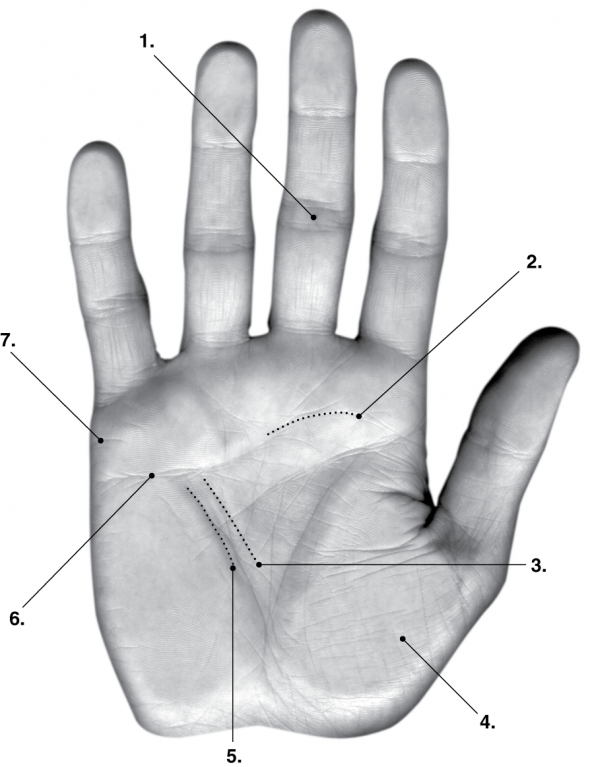
The Arthurian legend of Tristan and Isolde tells the story of a knight who slays a dragon to win the hand of an Irish princess for King Mark of Cornwall, only to be drawn into an adulterous affair with the bride after they accidentally ingest a love potion somewhere on the Celtic Sea. Christian Wijnants’ collection of clothing inspired by the tale—sheer capes, ornate macramé, a lucent dress knit to resemble chain-link armor—might be called light medieval, if such a thing is possible. The 28-year-old Belgian designer has already found a way to meld the seriousness of Northern European design with the Aquarian proclivities of his generation’s bohemian milieu. In the process, Wijnants has won a number of accolades, including last year’s coveted Swiss Textiles Award.
Shrugging off stark minimalism and an-drogynous designs, Wijnants draws equally from the traditional dress of South Africa, Gothic cathedrals of Brugge, and idyllic peasant chic to create elegant and natural, conceptual and wearable clothing. Trained at Antwerp’s Royal Academy of Fine Arts and later apprenticed under fellow Antwerp designers Dries van Noten and Raf Simons, Wijnants developed an organic, feminine style that relies heavily on his impressive knitting talents.
In his Fall-Winter ’07 collection, his ninth for his own line, materials that might be expected to sheathe the body bare it casually, and cosmopolitan blacks give way to provincial pastels; the mentality is thoroughly Arcadian, but fit for neo-hippie avatars and the gilded set alike. And when the streets of Antwerp and runways of Paris start to feel too much like home, Wijnants guides his followers to the far reaches of the Earth, turning thousand-year-old embroideries into lustrous patchwork dresses, dusty castles into sinuous gowns.
SOMA caught up with Christian as he traversed northwestern India in search of a moment of respite and, of course, inspiration for new designs.
First, what are you doing in India?
I am visiting India for the first time. I have been dreaming of this country since I was a child. The traditions, the colors, the people and their costumes, the saris, the Maharaja fairy tales, the forts and palaces, the food and spices, the landscapes and nature… All those things have inspired me and still fascinate me. I’m touring with my boyfriend through Rajasthan: Jodhpur, Jaipur, Jaisalmer, Udaipur and of course a little visit to the famous Taj Mahal in Agra. We are now 26 kilometers outside of Udaipur in the middle of the hills covered with jungle, staying in an old fort with a view of the cornfields and small villages. The setting is amazing! It reminds me of the Jungle Book. Next week I will go to Calcutta and visit some embroidery producers. I will probably develop some projects together with them as they have amazing knowledge of embroideries, handwork and crafts, as well as textile traditions: block printing, embroidery, weaving, carpets, even mirrors on fabric.
For whom do you make your clothing?
I don’t design for an elite. Many types of beauty are inspiring to me, but I like to dress a natural and feminine woman. I don’t like sophisticated beauties and artificial attitudes. I prefer an inner elegance and personal sense of style in a woman.
You manage to fuse conceptual experimentation and artistic latitude while making clothes that are eminently wearable. To what degree are your designs influenced or constrained by the idea of someone actually wearing them?
My goal is to create modern and wearable clothes. I never think of my clothes as show items or experiments, as they are created only for one goal: being worn. Fashion is a way of expressing new things but is nothing without somebody wearing the clothes; that’s the difference between art and fashion. I like fashion because it concerns everyone and can be understood by many. You don’t need any special education or knowledge to like a dress.
Your Spring-Summer collection draws on traditional garb and designs from South Africa, utilizing patchwork and striking color patterns. Can you talk about how this collection came into being?
I love traveling and exploring new cultures but unfortunately I don’t have the time to do it as much as I want. So I do a lot of research in museums, I see documentaries, visit the library, read books, go to the movies. I traveled to Egypt last year and that was the start of the collection. After weeks of research and designing, I ended up much more south, in Lesotho. My Spring-Summer collection was inspired by Lesotho’s traditions and rites, the colors of the houses and clothes, the way they recycle clothes into new items. I used graphics from the colorful painted houses, patchwork reflecting the recycling of different items, fringes as a reference to the raffia skirts and roofs of huts, flower prints, and [local] knotting techniques. Being born in a country as small as Belgium brings you automatically to open yourself to the rest of the world. As a designer, you can make people dream and travel through your work.
Your clothing tends to buck the image of Belgian design as solemn and minimalist, without ornamentation or an overt sense of femininity.
I think Belgian designers have very different approaches and personal styles—just compare Walter Van Beirendonck, Dries van Noten, Ann Demeulemeester. But the intellectual, somber cliche is partly true because northern countries of Europe, due to the climate and mentality, are more introverted, and use darker colors. I want to create a fresh and young feminine look with refined details without the clothing being too sophisticated or overpriced.
Many well-regarded designers, Issey Miyake in particular, have been lauded for embracing technology in order to fuse handcraft with the advanced design and production possibilities offered by computers. How do you feel about using technology to approach material and design?
I studied at the Academy of Fine Arts and my education is very classical: charcoal drawing, nude studies, painting, fashion sketching. We haven’t a technological approach to design. I don’t use computers to develop ideas or patterns because I feel more confident with paper and a pen. I do use computers for prints and graphics. I don’t have anything against these new possibilities. “Il faut vivre avec son temps” (“You have to live with the times”). It is amazing to see what they can do nowadays with new fabrics, the progress in techniques… but do we always need that? Are the garments better for it?
– Alexander Proven

Reading by Lena, who has no idea this palm belongs to Christian Wijnants.
1. There is strong intuition here, but he must filter it through his intellect before he can act on it.
2. To his loved ones: never lie about feelings to him—he cannot bear emotional dishonesty from anyone he loves. Crash his car and sleep with his lover, just don’t lie about your feelings!
3. The desire to understand the depths of others and the desire to be understood in his own depths are two of the great motivating forces of his life.
4. With all this emotional closeness, there is an intense need for physical solitude to balance it. Needs his own room, a retreat cabin, someplace he can get away and be alone physically.
5. A very thoughtful person, complex and intelligent. Other people’s feelings touch him deeply.
6. The depth of feeling and passion here—especially the kind of love one feels for ones family, one’s own tribe—is very intense. Sufficiently intense at times to become totally overwhelming. He cares so much—any harm to any of his tribe is felt like harm to himself. Vast empathy here.
7. Will have a really good marriage beginning in his mid to late 30s or early 40s that will last and be totally satisfying.

